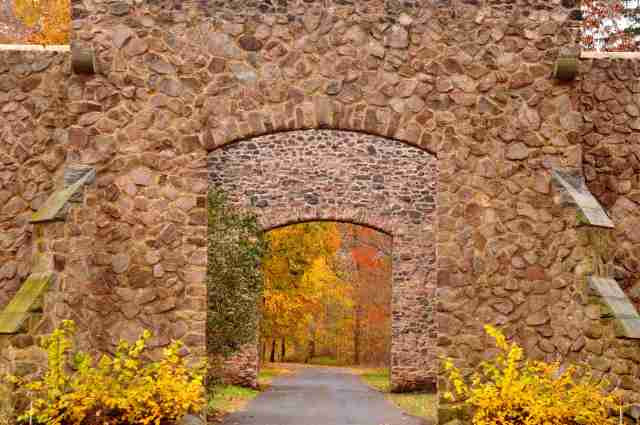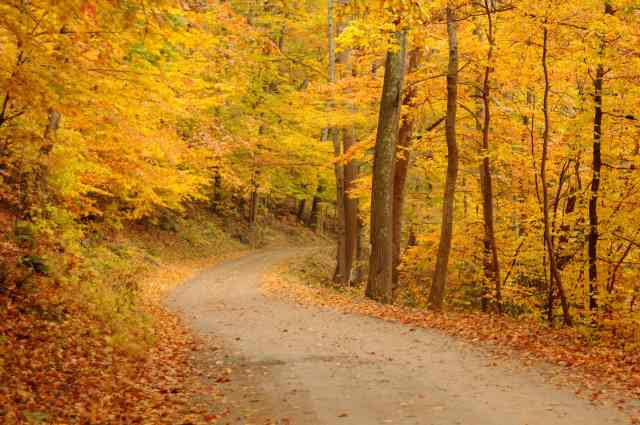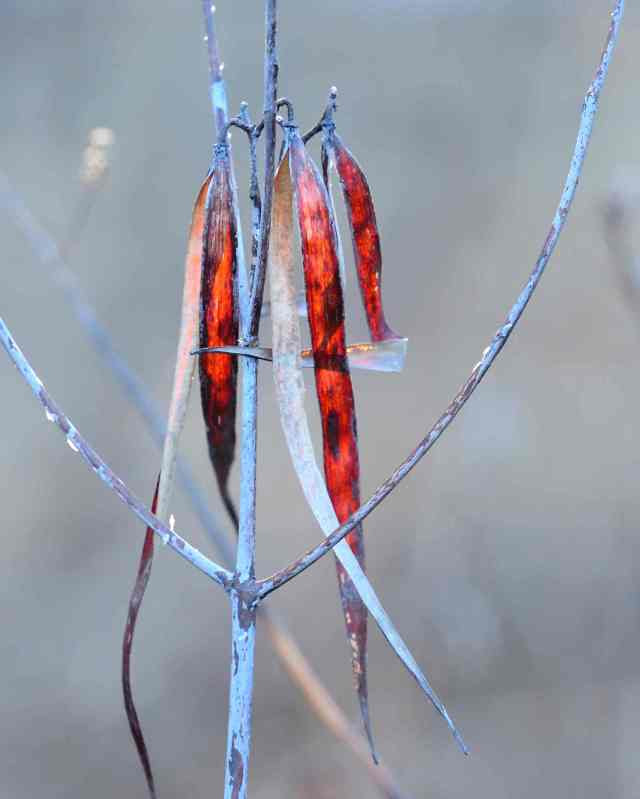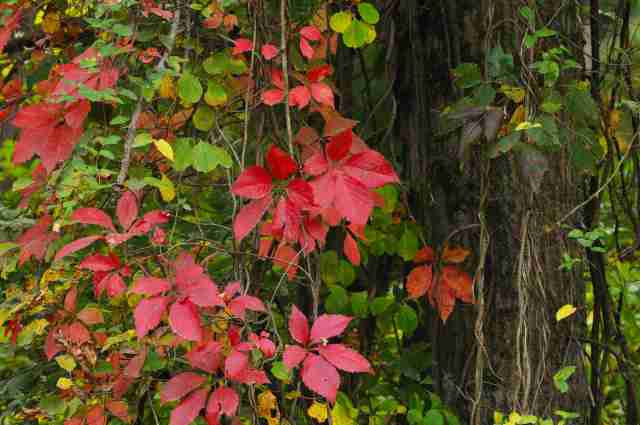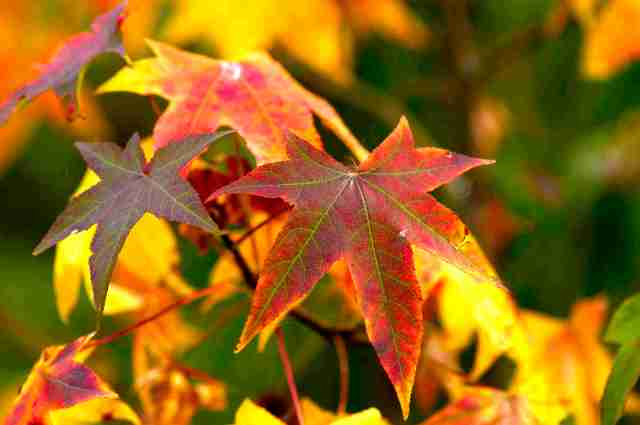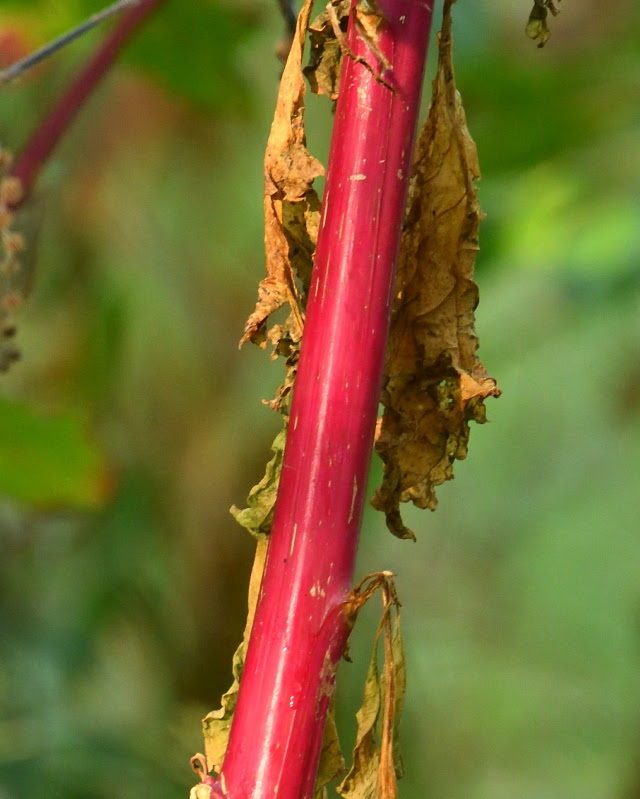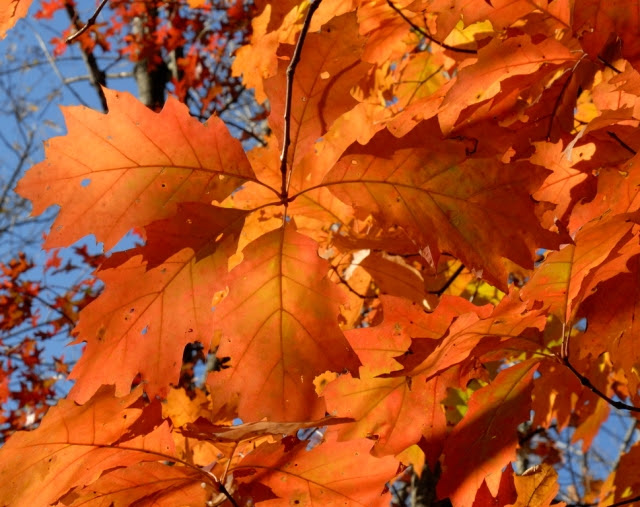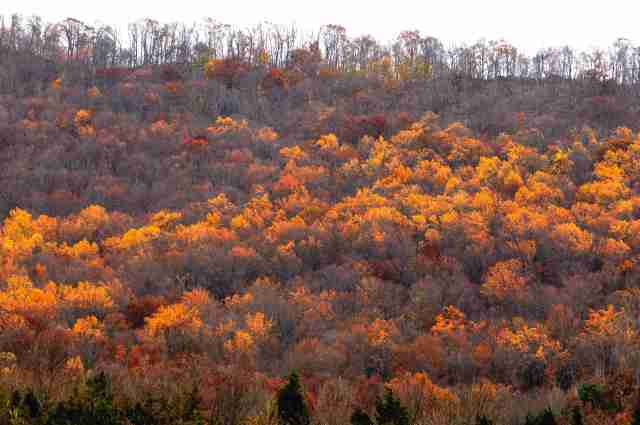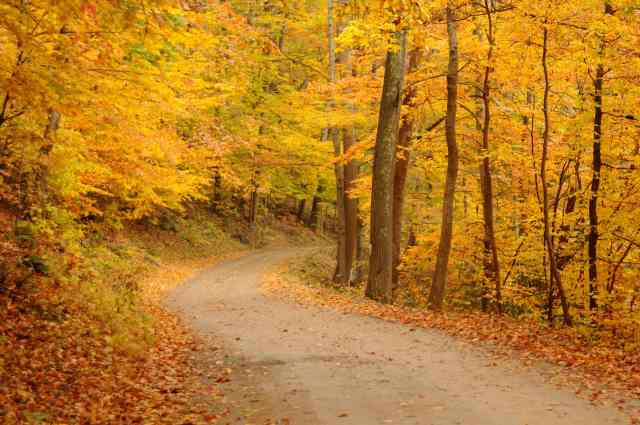Orange Swirl
Essay and photos by Joe Mish
The arched doorway through the width of the old stone barn, openeded a portal into the heart of the autumn woods, now ablaze with brilliant color. The opening in the far barn wall appeared smaller and focused the uninterrupted view directly down an abandoned woods road, paved with fallen yellow leaves, to vanish within the dense autumn foliage.
The scene created a sense of timelessness, a blend of the peak fall seasons past, all travelling down an endless circular path, bridging its fore and aft companions, summer, and winter.
Autumn took the leaves summer provided, tinted them a variety of brilliant colors, and wove a bright carpet to cover the bare land before the white quilt of winter snow is delivered.
The palette of fall color covers the visible spectrum with red, orange, yellow, blue, green, indigo and violet stirred, shaken, and swirled to create ambers, scarlets, magenta and purple tints. Red and yellow are primary colors that combine to produce various shades and intensities of orange. Yellow dominates in nature and serves as a background to emphasize the mosaic of red and yellow variants.
Slight blue tint on the dogbane pods and nowhere else, is a display of nature’s subtle use of tints and shades.
Red often needs a bright companion color in a mixed woodland to stand out, as the intensity of the red lacks in brightness. Native red maples will produce leaves with irregular splotches of red on yellow, the red often the color of fresh blood.
Early in the season splotches of red will appear among green foliage as virginia creeper, poison ivy and staghorn sumac, these are the preliminary sparks lit, to start the fall conflagration of flaming color.
Red variants include the bright salmon color of black gum and the purple wash common to sweet gum leaves. Sweet gum displays quite a variety of scarlet tints ranging from pale reds to shades of purple on a yellow canvas.
The brilliance of deep magenta stems of poke weed, vie only with the intensity of fluorescent orange oak leaves. The magenta is so brilliant and stems so straight, it appears alien to the natural landscape. The stems are unmistakable exclamation points impossible to miss.
Some individual red and black oaks produce an orange leaf so brilliant as the be described as fluorescent. The leaves appear to glow with an incandescence that acts as a visual magnet. It has been established that colors affect mood and behavior and from that theory, chromotherapy has evolved. Chromotherapy is a holistic healing technique and nature provides that treatment with fall colors. Orange, associated with boosting energy and creativity comes appropriately after the green therapy session of summer where peace, balance and calm dominated. Heightened energy and creativity provided by the orange variants are choreographed to arrive in time to meet the challenges of the coming winter. In that way the autumn blaze translates the subtle impact of decreasing daylength into a visual announcement; a planned redundancy by nature to ensure human survival.
The fall color can be appreciated in layers as the focal length of the lens is adjusted. A single leaf becomes an individual portrait looking like no other under high magnification. Reduce the focal length and see an entire mountainside draped in waves of yellow color.
An aerial view, seen through a time lapsed camera, animates the arrival of fall as is slowly moves south, the bright colors consuming the green foliage.
A classic fall scene of a leaf littered winding dirt road disappearing around a distant bend, into the embrace of a mass of flaming foliage, invites you to step inside the image. Walking down that old time forgotten road, curiosity beckons you to travel further, beyond the curve, into a world where time stands still and memories of autumns past eagerly await your arrival.
Author Joe Mish has been running wild in New Jersey since childhood when he found ways to escape his mother’s watchful eyes. He continues to trek the swamps, rivers and thickets seeking to share, with the residents and visitors, all of the state’s natural beauty hidden within full view. To read more of his writing and view more of his gorgeous photographs visit Winter Bear Rising, his wordpress blog. Joe’s series “Nature on the Raritan, Hidden in Plain View” runs monthly as part of the LRWP “Voices of the Watershed” series. Writing and photos used with permission from the author.

